You’re listening to Burnt Toast!
I’m Virginia Sole-Smith, and today is the one year anniversary of my book Fat Talk: Parenting in the Age of Diet Culture.
It both feels like yesterday and an entire lifetime ago. I am so, so beyond proud of the ride this book has had so far. Fat Talk was featured on NPR’s Fresh Air, it was on Good Morning America, I was profiled in The Cut, and went on dozens of different podcasts. The book made the New York Times bestseller list in it’s first week. And it was shouted out by Lucy Wainright Roche at an Indigo Girls concert, which will forever be known as the moment my career definitively peaked.
But much more crucially than all of that, I continue to hear every single week from new readers who have connected with the book and found it helpful in navigating some small piece of diet culture or some experience of anti-fat bias. Sometimes that’s for themselves, sometimes that’s in support of a child in their life—their own children, kids they teach, kids they coach, kids they see in their health care practice.
I’m not sure I’m ever going to have words for what it feels like to know that something I wrote helps people have better conversations with doctors, helps kids feel like they do belong on the sports team because their parents know how to advocate for them, helps us all find clothes that fit. These are the small—but not at all small—moments where diet culture and anti-fatness show up and you can feel overwhelmed.
Instead, we’re starting to figure out a different way through. We’re helping make kids safer in their bodies. I just can’t imagine anything that feels more valuable to me.
Last year to celebrate the launch of Fat Talk, we released Chapter One of the audiobook on the podcast. That continues to be our most downloaded episode ever.
Over 20,000 of you have listened to that episode. And tens of thousands more have read the transcript and circulated it. So, thank you so much for supporting that episode, which of course supported the book.
Today, to mark this one year milestone, we decided to share another audiobook excerpt with you. And I decided to share Chapter 11, because it’s spring, and we’re on the cusp of spring sports—soccer games and baseball games, and dance competitions and recitals and all of the things. Spring is big time for kids to be playing sports, dancing, and doing stuff with their bodies, which is so great. But it can also be really complicated.
So this is Chapter 11, entitled “I Got Taller and Gymnastics Got Scarier.” That’s a quote from Camille, a 13-year-old former gymnast in Boise, Idaho, who you’ll hear from shortly. Camille and so many other kids talked to me about how youth sports and dance—these activities that should be entirely body positive and health promoting—can often end up being wildly unsafe environments for kids. Especially kids in bigger bodies.
You’re also going to hear from researchers who are very aware of this problem and studying how messages around exercise in general and youth sports in particular, create these dangerous environments by teaching kids the mentality of “no pain, no gain,” of your body existing only in service of winning and the greater good, no matter how that feels to you. This leaves kids vulnerable to a lot of complicated feelings about their body, and even experiences of abuse.
I want to be clear that I wrote this chapter not because I think we should all pull our kids out of gymnastics and soccer, but because I want to see those spaces become more inclusive, safer, and more welcoming for kids in all bodies.
If you like what you hear in this chapter, you can of course check Fat Talk out from your library or purchase the audiobook, ebook, or hardcover editions anywhere books are sold. I will be the most delighted if you get the hardcover from Split Rock Books, my local independent bookstore, which hosts the Burnt Toast Bookshop. You can also support independent bookstores by getting the audiobook from Libro.FM and the ebook from Kobo.
And stay tuned—the paperback edition of Fat Talk will be out later this year and we have a bunch of new material going into it, including a new foreword by !
So here’s Chapter 11. And however you read or share this book—thank you so much for being here and supporting anti-diet, body liberation journalism.
Chapter 11: “I Got Taller and Gymnastics Got Scarier.”
“I started running when I was sixteen, because a girl called me Fatalie,” says Natalie, now twenty-nine. “But I kept running because I loved it.” She still does. These days, Natalie lives with her husband in Fredericksburg, Virginia, and works full-time in impact finance but also volunteers as an assistant coach for a local high school running team and runs on an elite team in Washington, D.C. Altogether, she spends at least thirteen hours a week running, cross-training, or coaching. Running is her main passion in life. And it’s complicated. Throughout Natalie’s running career, she has had to contend with the underlying anti-fat bias that motivated her into the sport in the first place.
I should clarify here that Natalie is, and always has been, straight-sized. As we’re going to see repeatedly in this chapter, “fat” is defined much more broadly in running, and many other athletic pursuits, and “thin” much more narrowly. If the rest of the world is Old Navy, running is Prada. For years, Natalie wanted running to make her thinner, but it also seemed like she wasn’t ever thin enough to be a runner. Intentional weight loss and disordered eating behaviors were common on her college running team. “My thing was bulimia,” Natalie says. But she didn’t lose much weight doing it. And that meant that Natalie didn’t take her eating disorder seriously for years, and neither did anyone else.
But during her senior year, Natalie and her teammates did get worried about one runner whose eating disorder manifested in far more classic symptoms—namely, extreme thinness. “We knew she was having breakdowns in the middle of the night about how hungry she was and bringing her own food to restaurants and skipping meals,” Natalie recalls. “And she looked sick. You could see it in the hair all over her body, and how thin she was.” Natalie spoke to an athletic department administrator about her concerns, who relayed them to one of the team’s coaches—who gathered the whole team for a lecture. “He thought she had the ideal runner’s body, and so there was no problem,” Natalie recalls. “He said, ‘Maybe if more of you ate like Steph, you would be national champions, too.’”
By 2015, Natalie’s running had been derailed twice by stress fractures. “I had a little bit of a ‘Come to Jesus’ moment of realizing that running and eating the way I was would not be sustainable,” she says. She found a therapist who took her disordered behaviors seriously and explained that eating disorders don’t have to result in emaciation to be severe. Two years later, Natalie had recovered enough to join her current running team, which she describes as an outlier in the running community. “They have a zero-tolerance policy toward eating disorders because they know how highly transmissible those behaviors are on a team,” she explains. “The messaging I get from this coach and the other runners is: Your body composition doesn’t matter. We have short, tall, big, small runners, and we’re all world-class athletes.”
But that is not the message that the high school runners she coaches are getting from most of the adults around them. And the farther Natalie gets in her recovery, the more this disconnect frustrates her. “Our head coach writes off any kid who isn’t what he calls ‘long and lean,’” Natalie says. Last season, Natalie was concerned by how often one runner demonized food around her teammates. “There was a lot of ‘Ugh, I ate chips, I’m so gross!’” Natalie says. “She was a kind of a toxic presence on the team in lots of ways.” But the girl was also “long and lean,” and so the head coach treated her as the team’s star. “He would say, ‘We need to develop this girl, she looks the part!’”
Meanwhile a talented member of another team, who Natalie sees often at meets, came back a few pounds heavier than she’d been the previous season and Natalie says the head coach’s disappointment was palpable. “She ran four seconds slower at a meet this season, and it was still the second-fastest time ever run at that meet. But he’s like, ‘Well, she’s in her head now,’” Natalie says. “It’s almost like, ‘We can’t be as proud of you, if you can’t perform at 110 pounds the same way you did at 105.’”
Until a few years ago, I didn’t think of running as a sport with a ton of body pressure attached. Or rather, my own anti-fat bias led me to assume that most elite runners were naturally, effortlessly that thin. But in 2019, runner Mary Cain went public about her experiences on the Nike Oregon Project, which she joined at age seventeen, making her the youngest American track and field athlete to make a World Championships team. At the Oregon Project, Cain says she was coached to lose so much weight, she lost her period for three years and broke five bones. Cain had developed a disorder originally called female athlete triad, and now known as relative energy deficiency in sport or RED-S to acknowledge that it happens in athletes of all genders. In addition to lack of periods for menstruating athletes, the hallmarks of RED-S are low bone mineral density, which increases an athlete’s risk of injuries and future osteoporosis, and what doctors term “low energy availability,” meaning athletes aren’t eating enough to support their caloric output. Not eating enough can happen intentionally or unintentionally, but RED-S is often diagnosed alongside eating disorders, to capture their physiological impact. And both can have long-term impacts on health. “I joined Nike because I wanted to be the best female athlete ever,” Cain says in a video on the New York Times website. “Instead, I was emotionally and physically abused by a system designed by Alberto [Salazar, the team’s coach] and endorsed by Nike.” Cain quit the team after finally telling her parents that she had become suicidal.
For decades, coaches and athletes alike have accepted the loss of periods and other RED-S symptoms as necessary prices for their sport, but Cain’s story exposed the lie in that “naturally thin athlete” narrative. In fact, dangerous body ideals and training goals are common in many physical activities, especially those involving women and girls. And it happens at every level. Camille, now thirteen, fell in love with gymnastics at age five and joined a team that had her on track for a Division 1 college team. But she quit just before the start of eighth grade because, as she puts it: “I got taller, and gymnastics got scarier.”
At five foot one, Camille, who lives in Boise, Idaho, isn’t particularly tall to the rest of the world, but the standards in gymnastics are different. “I always wanted to be four foot seven in gymnastics and stop growing and never get bigger at all,” she says. Her coaches began to comment on her growth spurt, though mostly in a friendly way. And Camille knew exactly how she compared to her teammates. Then, she started to fall more often or hit her feet on the bars. She was sure her changing body was to blame. A month before Camille quit, one of those falls resulted in a concussion. And while she was home recovering, she realized something: “I was kind of happy about it.” Not going to practice for a few weeks gave Camille a chance to notice how different she felt without gymnastics looming over her. “It had gotten to the point where, whenever I had practice, I spent the whole day feeling stressed and anxious about how it would go,” she says.
In addition to worrying about their height, Camille and her teammates often talked about how their stomachs used to be smaller before they hit their sixth-grade growth spurts. “You’re in a leotard, and it’s just very uncomfortable,” Camille notes. How kids’ bodies look in uniforms turns out to be one of the most common ways that anti-fat bias manifests in kid sports. “We’re auditioning for summer ballet sessions, and one studio’s application asked for height and weight on a program for eight-to fourteen-year-olds,” says Helen, mom to thirteen-year-old Edith in the San Francisco Bay Area. Edith is in a larger body and has been dancing since she was three years old. “I just wrote ‘This is concerning’ on the application, so I don’t think we’ll get in,” Helen says. “Honestly, without a long, lean body type, I doubt she’d get in there anyway.”
Helen also grew up in a larger body and played fullback and goalkeeper on her high school soccer team even though those uniforms didn’t come in her size. “I remember having to shop in the men’s section to find a goalie shirt that kind of fit,” she says. She’s determined that Edith be spared the same stigma, so she pays to have custom leotards and dance skirts made for Edith because the standard options don’t come in her size, and she recently started designing her own line of plus-size kids’ athletic clothes. But she knows it’s a privilege to have that option; the added expense of custom uniforms keeps many more kids from participating.
Katie, a mom of three in Pennsylvania, ran into the same issue when shopping for a softball uniform for her then eight-year-old Luna. “Why are they only selling ‘slim-fit’ softball pants for kids?” she asks. “When did softball become a sport that you have to be skinny to play?”
The answer lies somewhere between “in the last twenty years” and “maybe it always was.” Many parents think of participation in dance or sports as an essential rite of childhood. We see these activities as a chance to make friends, learn about collaboration, develop healthy habits, and get good and sweaty. And sure, maybe we also hope to discover that our child has what it takes to become the professional dancer or college scholarship–winning athlete we dreamed of becoming ourselves. But pursuing youth sport and dance in our larger culture of fatphobia means you are very much also pursuing thinness. “Weight stigma is normalized and embedded into every part and every thread of youth sport,” says Eva Pila, PhD, an assistant professor in the School of Kinesiology at Western University in Ontario.
Pila, who directs Western University’s Body Image and Health Research Lab, is one of very few exercise scientists studying the impact of anti-fat bias on kids’ experiences of sports and other physical activity. She says we don’t have good data on the prevalence of weight stigma in these spaces both because “that literature is still almost nonexistent” and because so many sport and exercise researchers don’t identify their own thinking about weight and health as stigmatizing. But Pila has traced how often experiences of weight stigma come up in the past twenty years of qualitative research on athletes and coaches. “We see fatphobia happening constantly, we just weren’t able to recognize it for what it was at the time.” Too often, we still aren’t. “If you want to be a good athlete, the expectation is you will train hard and that means you will maintain or control your weight,” Pila explains. “This is normalized to the point that kids may not even recognize that they are experiencing stigma.”
But we need to start to grapple with the reality of anti-fat bias in kids’ sports and the harm it causes. “Sport is one of the most amazing opportunities for kids to have positive, health-promoting, high-quality experiences in their bodies,” says Dana Voelker, PhD, also a kinesiologist and associate professor of sport and exercise psychology at West Virginia University. “But right now, it’s also one of the greatest risks to children’s health and development because of how we have constructed the environment and experience for kids.”
Competitive athletes are more likely to engage in excessive exercise and to meet criteria for an eating disorder, according to a 2018 survey conducted by the National Eating Disorders Association of 23,920 respondents (most of whom identified as white, female, and between the ages of thirteen and twenty-four). Anti-fat bias encountered in sports and dance also reinforces stereotypes about who gets to be an athlete or a dancer that kids are already encountering elsewhere in their lives. This bias determines who joins the team, who excels on the team, and who drops out. And it underpins all the other ways that child athletes are told their bodies don’t belong to them.
“IT’S JUST PHYSICS”
Before we dig into the very real harm caused by anti-fat bias in youth sports, we need to deal with the most obvious counterargument: that it’s not fatphobia to say that being thinner improves athletic performance— it’s science. “Weight is an easy target because it’s visible, and we’ve tied it to every performance marker,” says Pila. “I’ve had so many conversations with coaches and high-level trainers where the argument is, ‘Well, this is just basic physics.’” Consider a sport like rowing, where athletes compete to see who can push a boat through the water the fastest. Pila has worked with coaches who argue that weight management is a critical component of their athletes’ training regimens because the more the boat weighs (and by “the boat,” we mean both the inanimate object and the people sitting inside it), the harder athletes will have to work to push it along. “Nobody asks, ‘Should we build a better boat?’” she notes. Voelker, who has studied weight stigma in figure skating, points to a commonly invoked “eighty pound rule,” which dictates that a female figure skater must weigh at least eighty pounds less than the male figure skater who must lift her.
“Why eighty pounds?” she asks. “It’s used as a proclamation of science, but where is that science? And why do we emphasize the female skaters losing weight but focus less on male skaters getting stronger?”
“It’s just physics” also assumes fat athletes can’t bring other skills to a sport beyond their physical presence. But fat people can be strong, fast, flexible, and graceful. And research on the relationship between weight and physical fitness, much like the relationship between weight and health outcomes, is largely correlative and clearest at the extreme ends of the BMI scale, both high and low. “When you look at everybody in the middle, it’s not so clear,” says Christy Greenleaf, PhD, a professor of kinesiology at the University of Wisconsin in Milwaukee. “There are people in bigger bodies that can do all kinds of physical activities at high levels.” Many have cult followings on social media: The fat activist and writer
has won ballroom dance competitions and run marathons; Mirna Valerio, known as “the Mirnavator,” is a fat ultramarathon runner and hiker; Jessamyn Stanley is a fat yoga celebrity, author, and fitness influencer; author and influencer Meg Boggs is a fat powerlifter; and Louise Green, author of Big Fit Girl, runs the Size Inclusive Training Academy to help personal trainers work with folks in all body sizes.But few fat people compete at the highest levels of most sports. And maybe, sometimes, this is physics. But stories like Mary Cain’s teach us that “physics” has a very high human cost: “The body control piece is just seen as part of what has to happen at the elite levels,” says Pila. “When shaving a second off your time makes the difference between getting a medal or not, folks will say we have to look at every possible way of optimizing performance. This is what must be done, and sometimes mental health must suffer.”
And maybe, more often, it’s not physics at all but rather the larger athlete’s experience of anti-fat bias that keeps the doors to elite sports slammed shut. Because we see anti-fat bias emerge even in sports like shot put and powerlifting, where conventional wisdom holds that size equals strength, as well as football and rugby, where larger bodies are considered an asset, at least for certain positions. Across the sports spectrum, fat athletes can expect to encounter locker-room teasing, size-based nicknames, and differential treatment. “Fat athletes may excel” in certain sports, writes
, a journalist who covers sports, gender, and queerness, in a 2022 article for Global Sports Matters:But they are still overlooked when it comes to getting sponsorships. [ . . . ] Even in sports where fat athletes may contribute to a team’s success—like a touchdown made possible by the blocking of a lineman—it is never those players who are allowed to be the face of a team. The glory and renown goes to quarterbacks or running backs.
In this way, assigning kids to sports by body types doesn’t eliminate bias; it only narrows our understanding of what kids in different bodies can do. Laura, an attorney in Oakland, California, says people started asking if her now seventeen-year-old autistic son, Thomas, would play football when he was four years old. Laura is tall; Thomas’s dad is tall and bigger bodied, and Thomas, at seventeen, wears a men’s 3XL. “He’s been way off the growth charts his whole life,” Laura says. And on many trips to the park or the grocery store, she could expect to hear a passing comment of “Get that boy signed up for football!” Laura remembers touring a local high school when Thomas was in eighth grade and already over six feet tall. “The assistant football coach spotted us walking in the door and gave us this jolly but uncomfortably hard sell the whole time,” she says. Thomas was flattered but also confused. He has never had any interest in football and views the constant commentary as “just one of those weird things adults always say,” much to Laura’s relief. “The risk for head injuries in football really concerns me,” she says. “But it is tricky because this is one of the few sports where a bigger body is celebrated and sought after. And that’s a different experience from other sports, where you’re just the big kid on the team.”
Within the field of kinesiology, scholars are divided on the question of whether the experience of anti-fat bias has a bigger impact than weight itself on a person’s fitness level and athletic performance. “Some people see this as a social justice issue because if we’re not creating environments where all youth can feel empowered to participate, we are systematically keeping people from experiencing the benefits of the sport,” says Pila. “But there is also a camp that recognizes that, sure, at the participatory level, sport can be for everybody. But at the elite levels, exclusivity is a normative part of competing. So, we don’t have to change the system because only very exceptional people can get to that stage anyway.”
The problem with that latter argument is that “very exceptional” has always been code for thin. “In many sports, we’ve never tried anything different,” says Voelker. “We haven’t allowed people of certain body types to excel and move forward to the next level. So, it becomes a self-fulfilling prophecy that is far more about social construction than science.” We don’t even know what fat athletes can do at elite levels in most sports, because they never get there. And our resistance to changing is rooted in culture and emotion. “There is often this sense that we have certain rules in place to protect the authenticity of a sport,” says Greenleaf.
Consider the expectations around form and line for dancers, or the conviction of the head coach Natalie works with that he needs “long and lean” runners. “We hold on to these things as sacred,” says Greenleaf. “But rules change all the time.” She draws a parallel with the long-running debate about the high rates of head trauma in American football: “We know football is dangerous for athletes. But when I ask students, ‘Could we create a form of football that doesn’t involve head trauma?’ they can’t wrap their heads around it,” she explains. “These are people who care about health! But there’s this huge disconnect.”
These “rules,” which are traditions and rituals borne out of bias, may only apply in theory to elite athletes, but they absolutely ripple out and down through every level of competition. Meghan Seaman owns the On Stage Dance Studio in Stratford, Ontario. Even when placing dancers on her competitive team, Seaman never factors in weight. “If you’re willing to put in the work, I will find a place for you,” she says. Her competitive dance team travels to five competitions and puts on two shows each year between September and May. At every competition, Meghan’s team of just over one hundred dancers, some tall, some short, some thin, some fat, line up next to teams where virtually every girl is five foot seven and weighs one hundred pounds. “I feel like the impression of my team at dance competitions is that my studio takes it less seriously,” says Meghan. “Which is kind of true if [body size] is your scale. Nobody on my team would make it onto their team.”
Meghan grew up in the dance world, taking lessons and performing from the age of five to eighteen, and says she spent most of those years justifying her own disordered eating habits as necessary in her quest to be “a better dancer,” which meant having the ideal thin dancer’s body. “My experiences really shape the environment I strive to create for my students today,” Meghan says. She prioritizes diversity when she hires instructors and trains the staff not to give compliments or corrections related to a dancer’s body size or shape. “There is a big difference between saying to a child, ‘Suck in that stomach!’ and ‘Your butt is sticking out!’ or saying to a child, ‘Lengthen your spine,’” she notes. Meghan also gently challenges students who make fatphobic comments. If a student says, “I feel so gross in my leotard, I ate a huge dinner,” Meghan responds, “Good, you needed that dinner. You’re going to dance for two hours.” When she hears, “I’m too fat to be a ballerina, I can’t get my leg that high,” she explains why flexibility and endurance have nothing to do with body size.
To Meghan, this style of teaching feels worth it because it allows her to bring what she loves about dance to so many more students, even if she doesn’t have the glory of winning more competitions or sending students on to Canada’s National Ballet School. “The percentage of kids I teach that are going to have a career in dance is so minuscule, I would much rather focus on helping them have a good time, be active, and make friends and memories,” she says. That’s true of all kids, in all physical activities. No matter how much thinness matters or doesn’t at the Olympics, most of our kids aren’t going there. And yet the sports leagues and dance classes we sign them up for are structured around the possibility that one of them might. That helps to justify training regimens and messaging that perpetuate anti-fat bias. “You could say, ‘Well, let’s change the standards of this sport,’” Pila says. “But they land on, ‘Let’s change the athlete.’”
THE PROFESSIONALIZATION OF YOUTH SPORT
Greenleaf, the professor of kinesiology at the University of Wisconsin in Milwaukee, was a talented childhood figure skater. She was never interested in elite levels of competition, but the year she graduated high school, in 1990, she joined the Ice Capades, a circus on ice that toured the country from 1940 to the mid-1990s, featuring figure skating performances from former Olympic and US national champion skaters who had retired from formal competition. Greenleaf performed in the Ice Capades for a year, and every week she and every other skater stood on a scale. “We each had a goal weight we were supposed to maintain, and if you were over, you were fined a couple of dollars for every pound,” she recalls. The goal weight had nothing to do with health or even athletic performance: “They based it on how tall you were and how you looked. If they wanted you to look thinner, they would lower your goal.” Let’s change the athlete, indeed.
The pressure of those weekly weigh-ins resulted in lots of dieting and other disordered behaviors, Greenleaf confirms. But while the Ice Capades are long gone, figure skating and many other youth sports are a bigger business than ever. And that concerns Greenleaf and other researchers studying athletes’ experiences of weight stigma. “When adults are spending a lot of money on kid sports and making a lot of money on kid sports, we see greater expectations placed on kids to conform to those adults’ ideas about how they should look and behave,” she explains. “A lot of money” is putting it mildly: 27 percent of parents with at least one kid playing a sport said they spent $500 or more on related expenses each month, according to a 2019 survey commissioned by TD Ameritrade. Travel baseball can run parents up to $3,700 per season and travel volleyball anywhere from $1,500 to $10,000, according to Next College Student Athlete, a company involved in the college sports recruiting process. A website with advice for parents with kids who play travel hockey says that sport can cost around $6,000 per season.
One reason that youth sports have become so professionalized, and so expensive, is the shrinking budget for such activities at public schools and town park and recreation departments. These are the fields and gymnasiums where many kids kick their first soccer ball or do their first cartwheel because the activities are low cost or free. But such programs are often only available at younger ages; by the time your child is in upper elementary school, there will be both fewer options for them to play sports in a noncompetitive way and the expectation (especially in wealthier communities) that they need to be on a special team to receive the best coaching and opportunities. “For-profit sport and activity programs come in to fill that need for those who can afford it,” Greenleaf explains. “But this leaves by the wayside any families who can’t pay, as well as kids who don’t have the skill level or body that fits the expected mold.”
For kids who can participate in for-profit youth sports, the expectations often rapidly change. With five-hour practices, five days a week, Camille, the thirteen-year-old who quit gymnastics after getting taller, says it felt like she spent more time with her coaches than she did with her own parents—and much of her anxiety about the sport was related to how her coaches would treat her on any given day. In practice, if a gymnast fell, she would be assigned fifteen extra routines. And there was emotional stress on top of the physical ordeal. “During competition season, one of my coaches would get really, really mean and sometimes wouldn’t even talk to us,” she says. Camille and all her teammates were upset about it, so she finally wrote him a letter saying, “Everyone is kind of scared of you right now because you’re so serious. We do this sport to have fun.” She says the coach was nicer after that, but Camille didn’t feel better. “I got anxiety every time I went to the gym,” she says. “And I had no other life outside of gymnastics.”
Neither Camille nor her parents blame the coaches, even though things got so intense. “This was a really great gym that did a lot to prioritize kids’ health over competition,” says Camille’s mom, Ann, who is herself recovering from an eating disorder and identifies as small fat. But she does think the sport’s all-consuming culture dimmed her child’s light. “We knew she was exhausted and anxious all the time, and that she never wanted to try new things or talk to new people. Gymnastics had a very negative impact on my child’s mind and body.”
At the high school level, Natalie, the running coach in Fredericksburg, Virginia, reports that many of the star athletes on her team and others in the area pay for private coaching outside of school. “They join these clubs so they can get personal coaching, and the training regimens are very, very intense,” she says. But the part that bugs Natalie is that the coaches running such programs—“almost always these former college runners who are now guys in their forties”—promote their services on Instagram using photos of their female athletes. “It’s all these photos of these girls in their sports bras, with captions going off about how fast they are because they’ve had this training,” she says. “So even if these girls are keeping their own social media accounts private, it’s their thin, fast body that the coach is using to sell their product.”
The message these kids receive isn’t just that their weight needs to be low. It’s also that their body isn’t entirely their own. “Other people have ownership of your body because they have invested in it and because what you do with your body reflects on them,” says Greenleaf. It’s hard to argue that the professionalization of youth sport has been good for anyone’s health. “Can you really be well when you are training and pushing your body to its absolute limit, physically and emotionally?” asks Pila. “My personal opinion is no.”
All this conditioning, at its most extreme, leads to experiences like Mary Cain’s. It also leads to the numerous incidents of emotional abuse and sexual misconduct by coaches documented in an investigation into the National Women’s Soccer League, as NPR reported in October 2022, after several former players came forward with allegations. “Abuse in the NWSL is rooted in a deeper culture in women’s soccer, beginning in youth leagues, that normalizes verbally abusive coaching,” former acting US attorney general Sally Q. Yates wrote in her report on the investigation.
And it leads to the similarly toxic culture that enabled the abuse of the 250 girls and young women (and at least one young man), many of whom were USA Gymnastics national team members, by renowned sports doctor Larry Nassar. For decades, we now know, team coaches normalized Nassar’s behavior, brushing off why Nassar would prescribe (and perform) a procedure involving vaginal penetration and other forms of genital manipulation under the guise of necessary “sports massages” and pelvic floor physical therapy designed to treat hip or back pain. Olympic gold medalist Aly Raisman told Time magazine that while Nassar made her uncomfortable, it took years to understand that his actions were sexual abuse because the sport’s “culture of success at any cost” trained athletes to keep quiet and not ask questions.
“These girls are groomed from an incredibly young age to deny their own experience,” Joan Ryan, whose 1995 book Little Girls in Pretty Boxes explores the physical and psychological toll gymnastics takes on girls and young women, told the Guardian. “Your knee hurts? You’re being lazy. You’re hungry? No, you’re fat and greedy. They are trained to doubt their own feelings.”
IT’S ALL AESTHETIC ATHLETICS NOW
Here’s where I need to confess that the world of youth sport and dance is almost entirely foreign to me. When I was four my parents put me in a ballet and tap class, and I sat down onstage for the entire recital. At age seven, I played one season of Little League and sat down in the outfield during every game. We are not a family of natural athletes, and nobody except my dad cares about professional sports, so it was easy to lean, instead, into my passions for books and art. Plus: I was a thin kid, so my lack of interest in physical activity was greeted with amusement rather than alarm. Since I didn’t have to lose weight, I didn’t need to like exercise.
By middle school, it was a given that I would not be signing up for basketball or track. There was one week in eighth grade when I thought I might be a secret field hockey star—we played in gym class and I somehow, accidentally, scored a goal. I showed up for the first practice, realized they had to run sprints and only wore the cute skirts on game days, and quit. Now I realize that at thirteen, I’d internalized the idea that I only wanted to do sports if I could look good doing them—and I believed this to such an extent that I mostly didn’t do them at all.
Most of my memories of those early experiences with physical activity are of boredom or confusion because I never understood the rules, the dance steps, or how to keep my eye on the ball. But I also remember feeling intensely aware of how watched I was, as a child in a sparkly dance costume, or wearing the heavy batting helmet to step up to the plate. Watching kids’ bodies isn’t always about their appearance. It’s often about form, alignment, speed, and skill. But each of those concepts very quickly comes back around to how a child looks and how big they are.
We have been taught to expect this in activities like ballet, gymnastics, cheerleading, figure skating, and synchronized swimming, which are known collectively as “aesthetic athletics.” Showing off very thin bodies, especially female bodies, is core to the mission in these worlds. Aesthetic athletes are judged on their choice of costume, how they wear their hair, and on the lines and shape of their bodies; a competition can be won or lost on these matters of “presentation.” We also expect the body to be under scrutiny in a sport like wrestling, where athletes compete according to their weight class. As a result, all these activities have a long history of asking athletes to use extreme measures to control their weight. This pressure cuts across gender (although women’s wrestling has lower weight categories than men’s): Remember Cody in Chapter 9, chewing tobacco all day in school so he could spit out his water weight for high school wrestling meets. We can consider him Exhibit A for why youth sport does not always promote health. “These are the sports where you’ll see coaches recommending stringent weight control techniques under the guise of the athlete’s ‘well-being,’” says Pila. “Controlling weight is just part of coaching tactics.”
But aesthetic athletics aren’t the only activities with pronounced anti-fat bias. Whether your child wants to row, play hockey, or shoot hoops, it’s a question of when, not if, they will encounter toxic messages about body size and shape. There may not be such an overt focus on weight loss, but Pila’s research shows that these “less aesthetic” sports are still rife with implicit bias and opportunities for microaggressions.
This may come in the form of the uniform discrimination that Edith and Luna encountered. Uniforms in some women’s sports, especially, have also become increasingly revealing in recent years in ways that perpetuate and reinforce anti-fat bias by emphasizing how well athletes’ bodies adhere to the thin ideal. “I definitely think our shorts are not great, I’m pulling them down constantly,” says Naomi, fifteen, a high school freshman from Raleigh, North Carolina, of her school volleyball team’s uniforms, which feature very short shorts and a tight top. “There are lots of camel toe incidents. And we have a photographer who takes pictures at all the games, and you don’t want to be caught with your shorts up your bottom.”
In a misguided effort to compensate for the skimpiness of the uniforms, Naomi says the athletic department adopted a new rule: Female volleyball players (and only female volleyball players) had to wear athletic shorts over their uniform anytime they walked out of the gym, especially when their route to the school parking lot took them by the football team. “It’s so weird. If the uniform is so ‘inappropriate,’ we should be wearing something else,” says Naomi. “They made it sound like we were trying to show off our bodies or something, when we’re literally just walking around in what they told us to wear.” She’s not imagining the double standard. One day when Naomi was on her way to take a team photo in front of the school, she heard one of the athletic staff members say to another girl on the team, “Pull your shorts down! I wouldn’t let my daughter walk around like that.”
This is where anti-fat bias intersects with sexual objectification, especially of female athletes. Naomi’s uniform favors smaller bodies and sexualizes them in a sport that is ostensibly just about how well you can hit a ball over a net. Some proponents of such uniforms argue that they boost athletic performance: “If you’re talking about aerodynamics and elite athletes, okay,” says Voelker. “But when men and women’s uniforms are different for the same activity, then you start to go, ‘Well, this is a social construct that would better serve young people if we deconstructed it.’” I check with Naomi and indeed: “The boys’ sports teams just wear regular athletic shorts,” she reports. And when girls are penalized, as with the rule about covering up off the court, it teaches kids that bodies that look visibly female are somehow dangerous to have. This reinforces anti-fat bias since thin bodies tend to be less readily sexualized than fat ones, as we saw in the discussion of dress codes in Chapter 10.
Anti-fatness can also show up when other kids who use “fat” as a casual insult (one of Pila’s qualitative papers is titled, “Can You Move Your Fat Ass off the Baseline?”) and engage in the kind of food shaming and body comparisons that Natalie has observed in her runners. Parental anxieties and debates over the “right” snacks to serve at sport practices, or the best food to eat before games and meets, are another opportunity to reinforce to kids that the main reason they should play sports is to stay or become thin. A common rant on any online mom group is about the “junk” served at sports practices, and how Gatorade, protein bars, chips, and cookies have too much sugar and, thus, could undermine the benefit of the kids’ workout. But you’d only draw that conclusion if you think of your child’s soccer practice as a weight management program.
And all of that is just what happens when you’re allowed to play. Natalie recalls that last season, a girl in a larger body showed up at cross-country practice a few times and then just disappeared. She wasn’t cut; Natalie notes that her team doesn’t make cuts in cross-country because most meets let teams bring as many runners as they want, but only score the top seven athletes. But she stopped coming to practice. “I wonder if we just didn’t even have a singlet in her size,” says Natalie. “Or if it’s because she wasn’t getting individual attention or coaching because we don’t expect a kid who looks like her to be a great runner.” Kids learn fast that sports are about winning and that coaches want to coach the kids they think can win. Natalie says she has spent most of her own running career ranking tenth or eleventh on a team where only the top seven runners matter. “And whether I was tenth or eleventh directly impacted how much conversation I’d have with my coach,” she notes. “It was painful and discouraging and made me not want to try.”
Kids who don’t have the “right” body for their sport are subjected to the same aesthetic scrutiny as thinner athletes but get none of the potentially mitigating (if also complicated and objectifying) affirmation and validation. “Kids know when a sport has an idealized body type because they see what the Olympic athletes look like, but they also see what their friends on the team look like,” explains Greenleaf. “This influences their ideas about where they might fit and be welcomed.”
I wonder if the larger girl who tried to join Natalie’s team did so because she, or someone in her life, thought it would help her lose weight—because all too often, this is the only reason fat kids are encouraged to be athletic at all. Exercising for weight loss, like dieting, is a risk factor for the development of future eating disorders. And while this shouldn’t be the point, it also rarely works: Research has shown that physical education classes are ineffective at reducing student BMI, though scholars are unsure if that’s because kids don’t exercise all that much in a typical gym class or because of other factors.
There is similar evidence that youth sport participation rates do not correlate with lower childhood obesity rates. A 2011 evidence review of nineteen studies found “no clear pattern of association between body weight and sport participation.” Again, researchers aren’t sure why playing sports doesn’t make kids thin. It could be because, like gym class, the average team practice doesn’t involve that much movement: “There’s a lot of standing around in that hour session, especially when coaches are only playing their best players,” notes Voelker. But it may also simply underscore that the relationship between weight and exercise is murkier than we think. And we do know that it’s very possible to improve fitness levels through exercise without losing weight. So even measuring the success of youth sports in terms of their impact on childhood obesity only reinforces their inherent anti-fat bias.
The long reach of aesthetic athletics and the ripple effects of anti-fat bias through youth sports almost certainly contributes to the complicated, uneasy relationship that many kids will continue to have with exercise well into adulthood. After all, when we think of working out primarily as a tool to make our body conform to aesthetic ideals, we’re far more likely to stop exercising when it doesn’t. Middle-aged women who listed “weight loss” as their primary motivation to exercise were the least likely to do it, in multiple studies conducted by Michelle Segar, PhD, a behavioral psychologist who studies health habits at the University of Michigan. “We stick with habits when we’re internally motivated to maintain them,” she explains. “Weight loss is always externally driven— and the bar is forever changing on what constitutes ‘success.’”
But finding an internal motivation for exercise can feel impossible, because the most popular workouts right now are all exercises in self-objectification: We’re watching ourselves in the mirrors at barre or spin class or CrossFit, wondering if we look too flabby or too sweaty. Even if the mirror isn’t there, we’re mentally floating outside our bodies, assessing our stomach rolls when we go into shoulder stand. Or whether we’re able to open our hips so fully that our triangle pose could be held flat “between two panes of glass,” as a yoga teacher once instructed me. We’re checking the Peloton leaderboards or comparing our times on Strava to every other runner we know (and many we don’t). We don’t move our bodies to be in our bodies. We might talk about wanting to have more energy, or self-care, but mostly, we do it to look at our bodies and to be looked at. And this has severe consequences for our physical and mental health.
A BETTER WAY
What would youth sport and dance look like, if their priority shifted from athletic performance to athletic well-being? And how would this translate to a generation of kids who grow up to be adults who find intrinsic value in movement and the ways physical activities can reduce stress, build strength and flexibility, and otherwise benefit our lives without any weight loss agenda? These are the questions that Greenleaf, Pila, and Voelker are all asking in their academic research, but that don’t yet seem to be on the radar of many coaches or trainers. Greenleaf notes that traditional kinesiology education is at least partially to blame: “We’ve always taught these future coaches and physical education teachers that obesity is bad and to be avoided at all costs,” she notes. “We must shift away from thinking of the body as a machine and weight as a matter of calories in, calories out. We know that’s overly simplistic.”
That alone will be an uphill battle. But an even trickier shift may be what needs to happen in the culture of coaching, which still rests on the belief that athletes prove their commitment to a sport by toughing it out no matter what. When Greenleaf teaches first-year students, she talks about her research on the reality TV show The Biggest Loser, which critiqued how the show’s personal trainers verbally abused its contestants. “I explain that screaming and yelling at people is not an effective strategy for long-term behavior change even if it gets a short-term result because you’ve intimidated them,” she says. “But many students can’t contemplate how they could ever coach a sport like football without screaming at their athletes. That was their own experience with youth sport, and they’ve decided the outcome was worth it.”
Comprehensive anti-bias training could help those same students identify the harm caused by abusive coaching methods. But it’s also true that most of the coaches whom the average parent encounters when we’re signing our kids up for basketball or soccer don’t have any specific training. They’re just teachers who happened to have played the sport in college, or local parents or people like Natalie, volunteering for the gig. More likely than not, nobody is looking too hard at how the coach operates, let alone how they talk about food and weight. But that also means there is more of an opportunity for other parents to get involved, ask questions, and offer other perspectives. “If your child is just beginning a sport, do some homework,” suggests Greenleaf. “Chat with the coach or the organization’s leadership [if you’re looking at a for-profit program] and ask, ‘Hey, what are you doing to be inclusive of different body shapes and sizes?’”
You can also ask about protocols around snacks at practice and pregame fueling, as well as the available size range of uniforms or costumes. Especially with aesthetic athletics, it makes sense to ask how they think about eating disorder prevention and whether there are ever weight requirements to progress to the next level. “Any coach or studio owner who has actively grappled with this issue should have answers at hand,” notes Meghan Seaman, the dance instructor. “I actually love when parents ask me these things because it gives me a chance to share what we do differently.”
It may make sense to encourage kids in bigger bodies to try sports where their bodies are more likely to be viewed as an asset: Laura reports that Thomas has had wonderful experiences doing kung fu and shot put. “He doesn’t feel like he’s the biggest kid on the team,” she says. She liked kung fu, especially, because people enter the sport at all different ages. “I never encountered body issues, it’s just about skill.” Finding a sport safe space like this could be essential for many kids who wouldn’t feel welcome in other activities. But we also shouldn’t steer fat kids away from their passions. And so Thomas, who has always loved the water, also plays water polo on both a club team and his school’s team. He’s one of the biggest kids—“and they wear Speedos, it’s all out there!” notes Laura—but so far, the experience has been a positive one.
If your child is older, or already deeply passionate about a particular sport, you should still ask these questions any time they join a new team or program. But you’ll also want to start fostering their own awareness of the risks of their sport. If your child doesn’t have the kind of body idealized by their sport, you can discuss that with them honestly. Acknowledge what they love about the activity, but also bring up the problems: “Ballet is such a beautiful art form, but it has a really problematic history around body size.” Then you might say: “You have a bigger body, and we think that’s amazing. But it might get hard in this world. Do you want to do this?” suggests Zoë Bisbing, a therapist who specializes in eating disorders in New York City, who is herself a former child ballerina. “You need to name it and set some boundaries. ‘I know you love to dance, and I want to support you in pursuing this passion, but I’m not going to let you starve yourself or try to manipulate your weight. Eating enough to support your growth is a condition of participating.’”
For my own kids, I’ve opted to steer clear of aesthetic athletics, beyond one adorable and very low-pressure kindergarten ballet class. But my older daughter is passionate about riding horses and rock climbing—and I know that small, lean bodies are prized in both of those sports (which are also expensive and not readily accessible to many families). So, I look for opportunities to name and discuss anti-fat bias if it comes up and seek out examples of climbers and equestrians in bigger bodies excelling at their sport. (We’re fans of @TheStrongSarah and @DrewClimbsWalls, two fat climbers on Instagram who post videos of themselves excelling, but also falling and messing up, on rock walls.) At eight, Violet also opted not to join a local rock-climbing team precisely because she didn’t want the pressure to have to climb faster and win at meets. She may decide in the future that she does want to compete—but making competition optional helps her understand that her own enjoyment of the sport matters more than what other people think of her body and her performance.
If your child adores a team sport (where competition is built-in), consider whether the elite travel team is necessary or beneficial to their experience. Can they just play pickup basketball at the park or go on family bike rides? Can you join a community pool and let them have fun swimming there on weekends instead of taking on the intensive schedule and pressure of a swim team? Bisbing thinks of conversations like these as eating disorder prevention. And parents need to have them even when a child does appear to have the ideal body for their chosen activity, especially if they are still prepubescent. “Be clear: We can’t interfere with puberty. It’s not normal to lose your period, and I will step in to protect you if that’s a risk.” After all, while thinness may open doors to a sport, it doesn’t guarantee a trauma-free experience. Greenleaf suggests opening a conversation with, “Your body is your calling card in this sport, and you might take a lot of pride in that. But it also gives people permission to comment on and evaluate your body.” Talk with your child about their right to refuse to be weighed, or to set boundaries with a coach about body comments, and role-play those conversations so your child can practice advocating for themselves.
Helen has taken this approach with Edith and so far, it seems to be working. When I meet Edith over Zoom, she’s aware that she’s one of the biggest kids in her dance class: “I feel like I look different from the others,” she tells me. “And I’ll think, like, ‘Do I stand out in a weird way?’” But she doesn’t question her fundamental right to be there. She knows that her dancing adds value. “I don’t think anyone else thinks [about my weight],” she says. “And if we only showed one type of body, that might be discouraging to other people.”
It’s also important that kids know that they always have an out, and that you’ll support them quitting the activity (yes, even if you paid for it, even mid-season), if the pressures around body and performance get too intense. Every expert I spoke with for this chapter cautioned against letting kids specialize in activities too early, or even at all. “It’s fine to be an elite X kind of athlete, but you better have other things in your life that make you feel like you,” says Bisbing. “Because this will inevitably end, and probably while you are still pretty young.”
For Camille, the benefits of quitting have been immediate and clear-cut. She’s grown a few inches and her periods have gotten more regular. And she’s turned into a different person. “In seventh grade, I didn’t talk to anyone, at all, at school,” says Camille. She spoke only when a teacher called on her and made just one friend the entire year. In some ways, she barely noticed how isolated she was in school; the conversations and concerns of other kids seemed so removed from Camille’s life. Because all day, every day was consumed with worry about how that afternoon’s practice would go. “But now, in eighth grade, that’s changed completely,” Camille tells me, and she can’t help smiling as she says it. “I talk to everyone. I’m friends with everyone in my classes. Without gymnastics, I can just be me.”

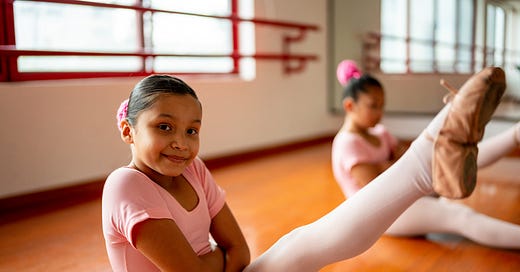



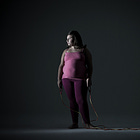


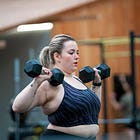
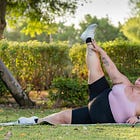
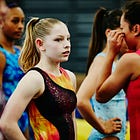






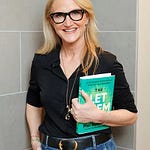
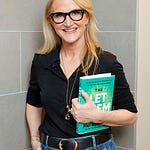



Share this post